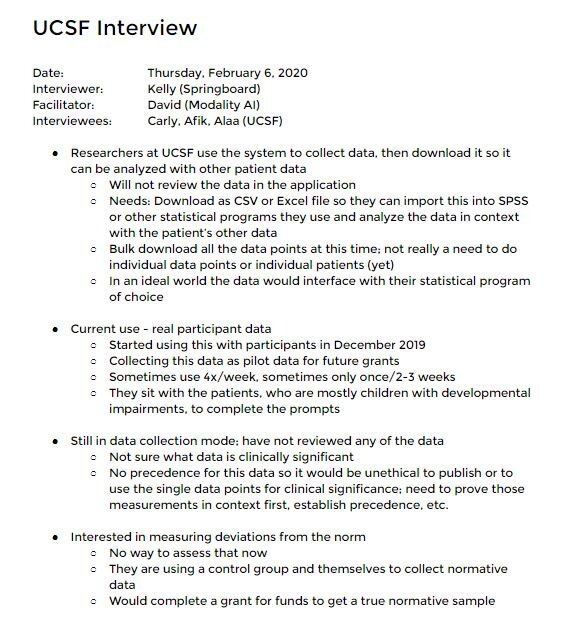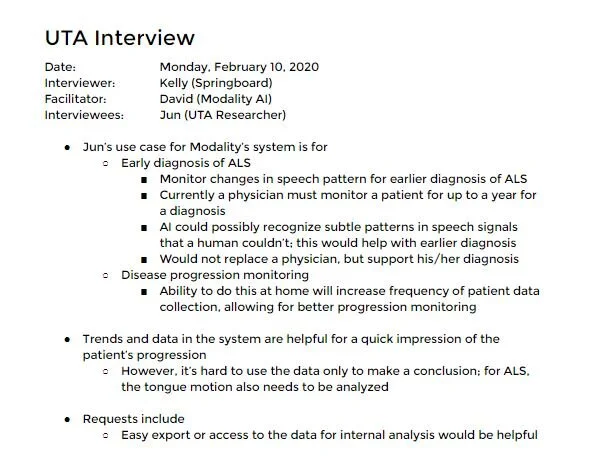Overview
Modality AI uses audio and video feeds from a patient’s computer to record 252 facial and voice biometric markers during a video call session. Patients engage with the platform by following audio and video prompts and speaking aloud. Applications for ALS, autism, depression and anxiety monitoring have been created using the Modality AI platform.
Problem space and scope
Modality AI was looking for a UX designer to assess and recommend solutions for data display and consumption. 252 data points are collected in each session, creating a need to display this information in
They were also looking for a designer to provide recommendations around the overall usability of the administrative pages. If time allowed, they were also interested in data visualization elements for a potential dashboard.
252
Users
The current users are Modality AI’s research partners at University of California San Francisco (UCSF) and University of Texas Austin (UTA).
Target future users include pharmaceutical trial lab managers and healthcare providers. Both could use Modality AI’s system for managing patient progress, for either pharmaceutical trials or general health monitoring.
My role
I entered a 6-week engagement with Modality AI as part of the UX boot camp program I took via Springboard. I worked solo on this project, evaluating Modality AI’s current platform, crafting and executing a research plan, designing prototypes and testing, and providing final design recommendations to the company.
Constraints
Limited users
The current users (university researchers) were under grant deadline pressure during my engagement with Modality AI. The company requested that I only do one round of user interviews with them and recruit other users to complete the usability tests.
Limited experience in the application
The university researchers had not yet spent a lot of time engaging with the platform so their feedback was limited.
40-60 hour engagement
My engagement with Modality AI was supposed to be limited to 40-60 hours of work as it was an “internship” for a bootcamp program.
Process
[insert process infographic here]


